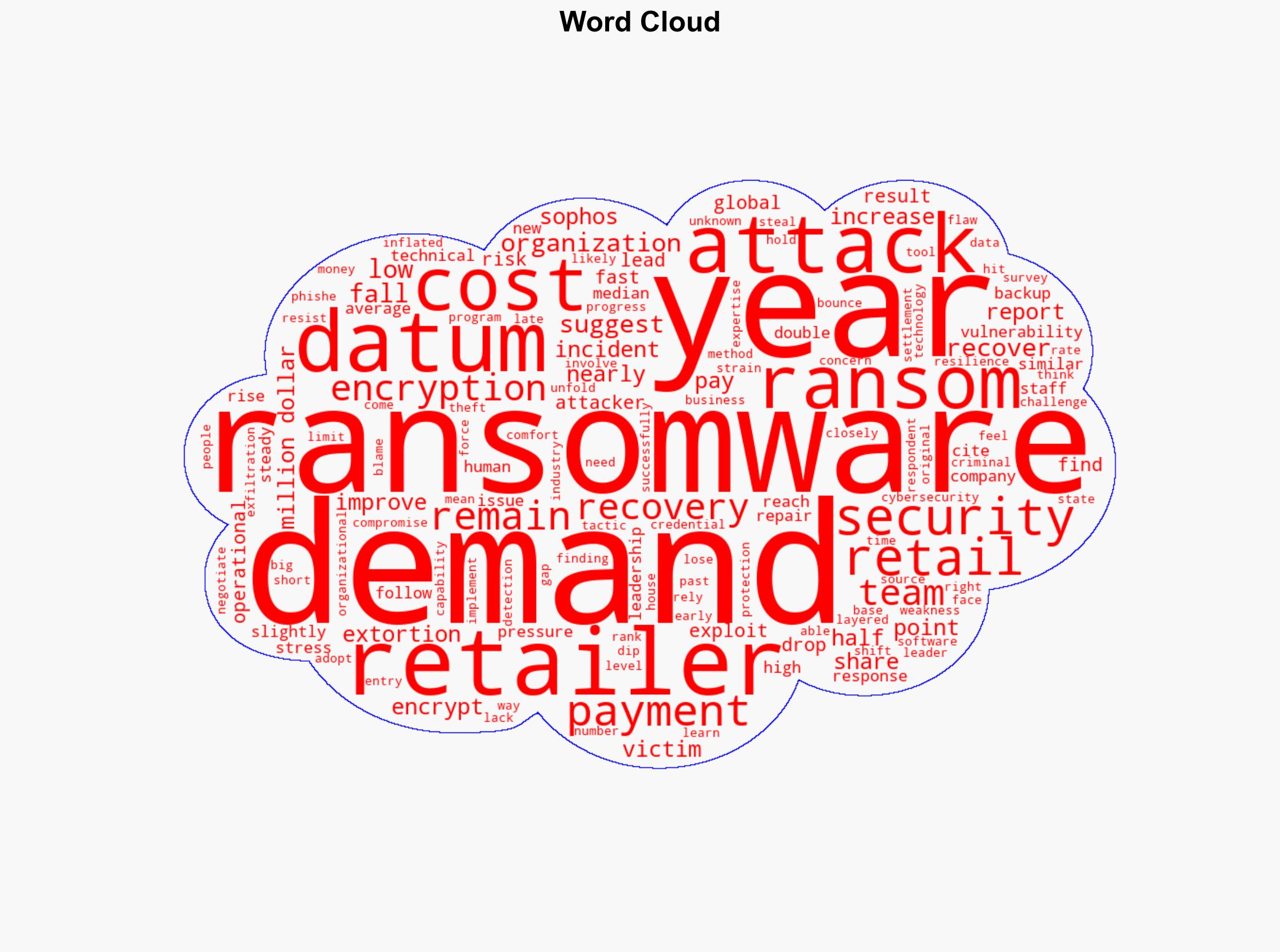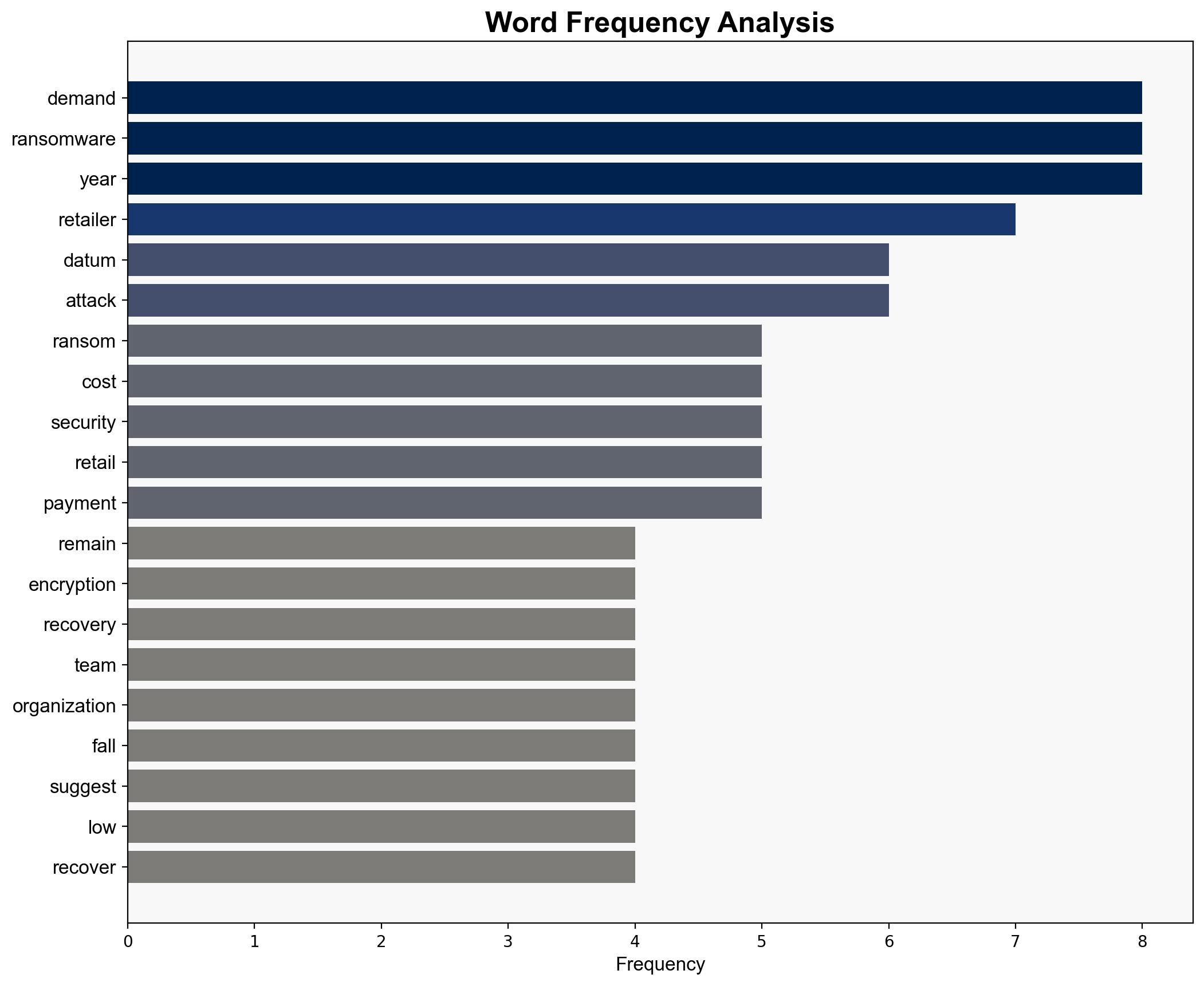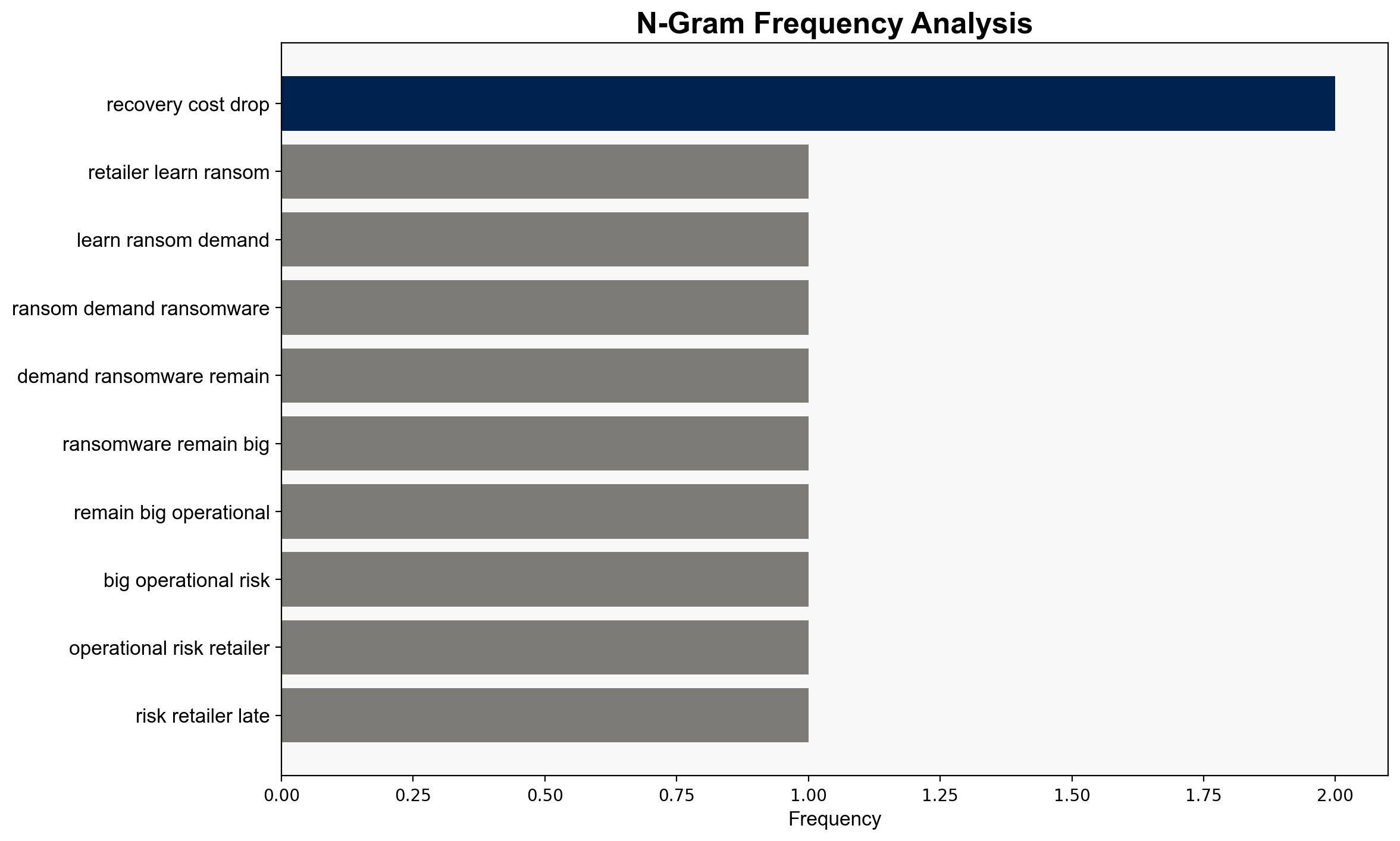Retailers are learning to say no to ransom demands – Help Net Security
Published on: 2025-11-06
Intelligence Report: Retailers are learning to say no to ransom demands – Help Net Security
1. BLUF (Bottom Line Up Front)
Retailers are increasingly resisting ransomware demands, leading to improved recovery times and reduced financial impact. However, the threat persists with evolving tactics. Confidence Level: Moderate. The most supported hypothesis is that retailers’ enhanced cybersecurity measures are effectively reducing the impact of ransomware attacks. Recommended action: Continue investment in cybersecurity infrastructure and training to maintain resilience against evolving threats.
2. Competing Hypotheses
Hypothesis 1: Retailers’ improved cybersecurity measures and response strategies are effectively reducing the impact of ransomware attacks, leading to lower encryption rates and faster recovery times.
Hypothesis 2: Attackers are shifting tactics from encryption to data exfiltration and extortion, which may not yet be fully recognized or countered by retailers, potentially leading to future vulnerabilities.
Using ACH 2.0, Hypothesis 1 is better supported by the data indicating reduced encryption rates and faster recovery times. However, Hypothesis 2 remains plausible due to the steady rate of data theft and potential underestimation of evolving threats.
3. Key Assumptions and Red Flags
Assumptions for Hypothesis 1 include the belief that current cybersecurity measures are sufficient and that the decline in encryption rates directly correlates with improved defenses. A red flag is the potential underreporting of data exfiltration incidents, which could skew perceptions of threat reduction.
For Hypothesis 2, an assumption is that attackers are primarily motivated by financial gain through extortion rather than encryption. A potential blind spot is the lack of comprehensive data on new attack vectors being employed by cybercriminals.
4. Implications and Strategic Risks
The shift in ransomware tactics poses ongoing risks to retailers, including potential reputational damage and financial loss if data exfiltration becomes more prevalent. The psychological impact on cybersecurity teams, including stress and turnover, could weaken organizational defenses. Economically, the cost of ransomware recovery remains significant, impacting profitability and operational stability.
5. Recommendations and Outlook
- Enhance monitoring and detection capabilities to identify and respond to data exfiltration attempts promptly.
- Invest in employee training to mitigate human error and strengthen organizational resilience.
- Develop a comprehensive incident response plan that includes scenarios for both encryption and extortion tactics.
- Scenario Projections:
- Best Case: Continued investment in cybersecurity leads to a significant reduction in successful ransomware attacks.
- Worst Case: Attackers successfully pivot to data exfiltration, causing widespread data breaches and financial losses.
- Most Likely: Retailers maintain resilience against encryption but face ongoing challenges with evolving extortion tactics.
6. Key Individuals and Entities
Chester Wisniewski is noted for his commentary on the need for comprehensive security strategies in the retail sector.
7. Thematic Tags
national security threats, cybersecurity, counter-terrorism, regional focus





